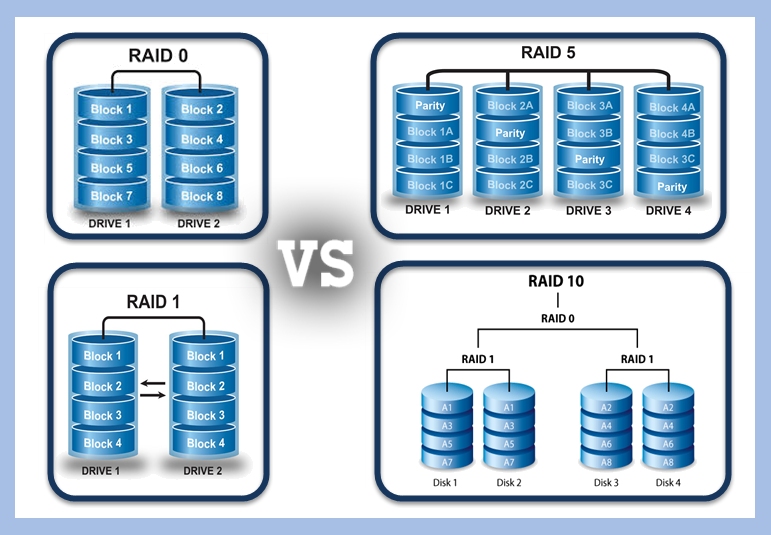If you are a competitive PC game player, maybe you are looking for solutions to improve your PC performance. If you are considering RAID technology, you will be interested in this article. Here we will tell you which RAID level is better for gaming.
In the previous article – “HDD vs SSD: Which Is Better for Playing Game?“, we’ve discussed about whether HDD or SSD is better for gaming. Similar to that, many gamers are also thinking about using RAID technology to upgrade their PC. If you are one of them, you should read on. In the followings, we will look at 4 common kinds of RAID levels and show their pros and cons in gaming.

RAID 0
In RAID 0, there is an even number of drives. And data will be stripped across the drives equally. For instance, when a 200kb file is written to RAID 0 with 2 drives, the file will be separated into two equal 100kb strips. And one is written to drive 0 and the other is to drive 1 at the same time. Hence, theoretically, writing strips simultaneously will be faster than writing of the entire 200kb file.
Therefore, in comparison to other RAID levels, RAID 0 has an advantage in speed. Yet, it also has a great drawback. It doesn’t offer fault tolerance. To be specific, if a single drive fails, RAID 0 will fail at once. Then, the array data will be damaged or lost, like corrupt Outlook data. If you just long for fast performance, it is a good choice to invest in RAID 0, but meanwhile you should accept its flaw to back up RAID 0 at regular intervals.
RAID 1
When it comes to RAID 1, its advantage in excellent fault tolerance is worthy of mention. In RAID 1, internal drives are separated two sets. And the first set is mirrored to the second set. Hence, if one drive fails, you still can access your data. But, it is due to mirroring that RAID 1 is much slower than other RAID levels. So, in terms of playing game, RAID 1 is not a good choice.
RAID 5
Apart from RAID 0 and 1, RAID 5 is another widely used RAID level. It consists of at least 3 drives. The RAID controller utilizes block-level striping to write to all of disks at once. Thus, if a single drive fails in RAID 5, the array will be rebuilt. RAID 5 is faster than RAID 1, but not as fast as RAID 0. But thanks to its fault tolerance, you can take it into consideration for gaming as well.
RAID 10
RAID 10, also known as RAID 1+0, is actually a nested RAID of RAID 1 and RAID 0. Thereby, it combines the advantages and disadvantages of both RAID 1 and 0. To be specific, it is much faster than RAID 1 and also provides fault tolerance which RAID 0 lacks. Based on these, RAID 10 is also an option, but not the best one.
Author Introduction:
Shirley Zhang is a data recovery expert in DataNumen, Inc., which is the world leader in data recovery technologies, including mdf recovery and outlook repair software products. For more information visit www.datanumen.com